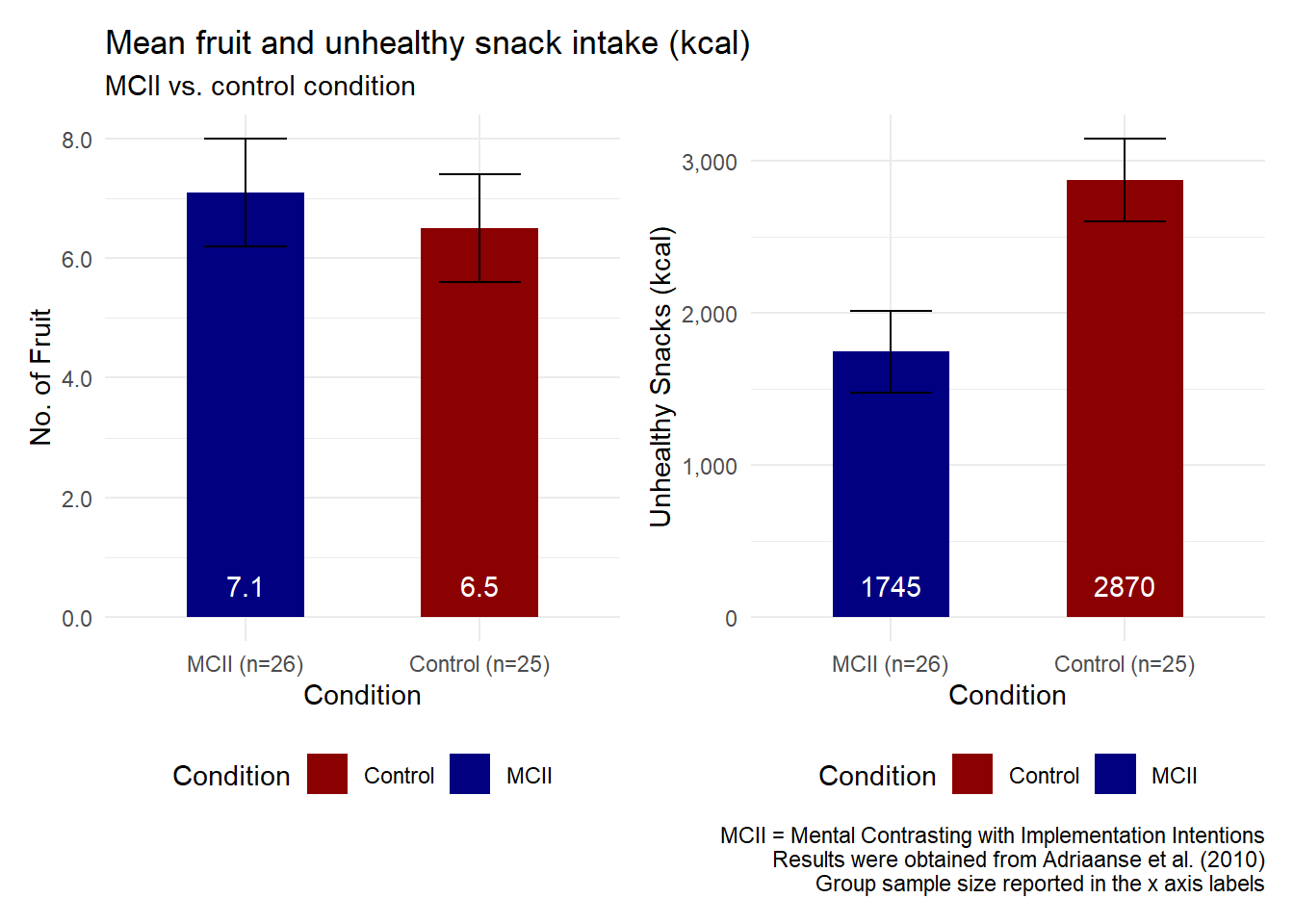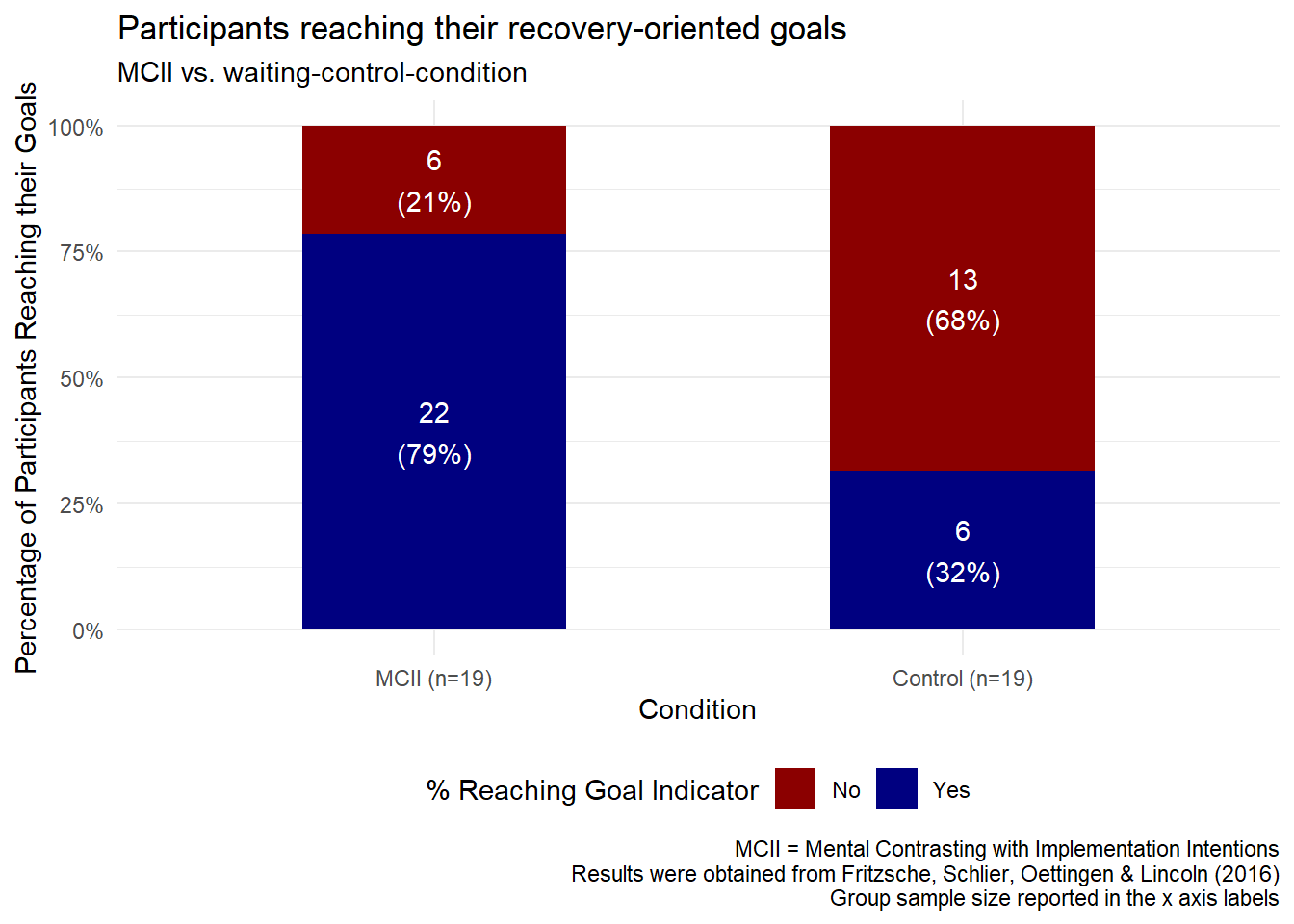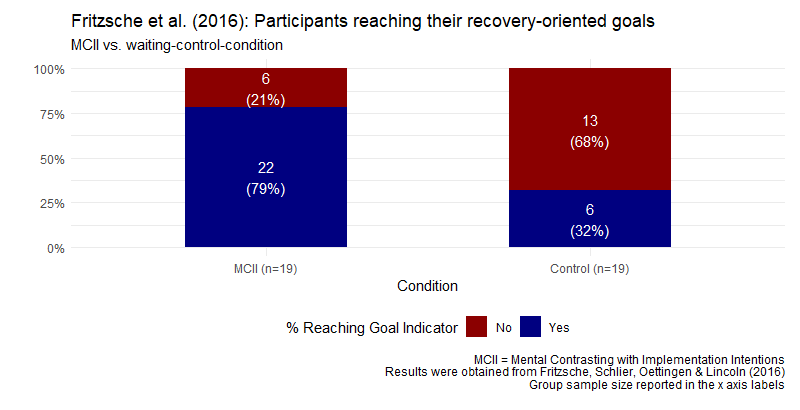Goal setting and achievement
As the new year comes to an end, many people including myself will be contemplating how the next year will look. Specifically, I’ll be thinking about what I will be doing differently and what I will want to achieve in various life domains. Both setting goals and going out to achieve them is no easy task but perhaps there are some strategies that are out there for formulating better approaches to accomplishing goals.
An important distinction between goal setting and goal achievement was described by Lewin (1926). This distinction is important as setting goals alone will not simply lead to the achievement of such goals. As part of this process of setting goals, one must display a strong commitment to the goal. Previous research further indicates two components of strong goal commitment:
Desirability of the goal: This refers to the beliefs about the positive outcomes that be achieved if the goal was attained (Heckhausen, 1977).
Feasibility of the goal: This refers to the expectations about how probable the goal would be achieved (Gollwitzer, 1990).
So, high desirability and high feasibility of the attaining the goal may facilitate strong commitment to goal attainment. This appears to be intuitive. I personally haven’t even considered these aspects when setting goals - they generally are spur of the moment wishes that haven’t involved any rigorous planning and/or monitoring thereafter. Ultimately, I fail at achieving those goals.
Mental contrasting with implementation intentions (MCII)
There is plenty of research that examines strategies for setting goals and its effectiveness in goal attainment but to keep things (hopefully) short, I’m focusing on one goal setting intervention called Mental contrasting with implementation intentions (MCII) - a metacognitive strategy for implementing self-regulated behaviour change (Duckworth, Kirby, Gollwitzer, & Oettingen, 2013). The two components are briefly described below:
Mental contrasting: This is an exercise whereby individuals contemplate about a desired future state and convert these thoughts into goals (Oettingen & Gollwitzer, 2010). However, this process also involves acknowledging and reflecting on the present reality that stands in the way of the goal attainment. By this, it’s not simply wishful/positive thinking with no consideration of current circumstances.
Implementation intentions: This requires the formation of an if-then action plan which incorporates planned actions in response to specific situations that arise during the pursuit of the goal (Gollwitzer, 1993, 1999). For example, a person wishing to increase their physical activity after work might form the implementation intention “If I feel exhausted after work to go to the gym, then I will go for a walk.”
I do like the concept of mental contrasting as it avoids falling into endless positive thinking trap and takes into account the current state and circumstances of the individual. I don’t want to hear any nonsense like the stuff in The Secret.
MCII appears to be effective in supporting goal achievement for people with mental health problems (Fritzsche, Schlier, Oettingen, & Lincoln, 2016; Toli, Webb, & Hardy, 2016), improving physical activity for stroke survivors (Marquardt, Oettingen, Gollwitzer, Sheeran, & Liepert, 2017) and reducing unhealthy snacking habits (Adriaanse et al., 2010). There are other studies showing support for MCII which I haven’t included. I think MCII is a nice strategy that is cost-effective and is realistic. I’ve provided results of two studies below as a graphical representation that examined the effectiveness of MCII on different goal types. In both studies, the use of MCII facilitated a higher achievement of the specified goal compared to the control group.
See “WOOP” in the last section for some information on a variation of MCII that anyone can utilise.
Fighting unhealthy snacking habits using MCII
Adriaanse et al. (2010) examined the effectiveness of MCII for fifty-two female students on their goal of eating fewer unhealthy snacks over a period of 1 week. The results are presented below.
# Adriaanse et al. (2010)
# plot % reaching goals in conditions
# store mean fruit and unhealthy snack intake statistics in data frame
study_1_plot_df <- data.frame(food.type = c("Fruit", "Fruit", "Unhealthy Snacks", "Unhealthy Snacks"),
group = c("MCII", "Control", "MCII", "Control"),
participant.num = c(26, 25, 26, 25),
mean = c(7.1, 6.5, 1745, 2870),
se = c(0.9, 0.9, 269, 274)) %>%
mutate(group.label = factor(paste0(group, " (n=", participant.num, ")")))
# mean fruit plot
fruit_p <- ggplot(data = study_1_plot_df %>% filter(food.type == "Fruit"),
aes(x = forcats::fct_rev(group.label),
y = mean,
fill = group)) +
geom_bar(stat = "identity", width = 0.5) +
geom_errorbar(aes(ymin = mean - se, ymax = mean + se), width = 0.35) +
theme_minimal() +
theme(legend.position = "bottom") +
ylab("No. of Fruit") +
xlab("Condition") +
scale_y_continuous(labels = scales::comma) +
scale_fill_manual(values = c("red4", "navyblue")) +
geom_text(aes(label = mean, y = 0), color = "white", vjust = -1) +
labs(title = "Mean fruit and unhealthy snack intake (kcal)",
subtitle = "MCII vs. control condition",
fill = "Condition")
# mean unhealthy snacks (kcal) plot
unhealthy_p <- ggplot(data = study_1_plot_df %>% filter(food.type == "Unhealthy Snacks"),
aes(x = forcats::fct_rev(group.label),
y = mean,
fill = group)) +
geom_bar(stat = "identity", width = 0.5) +
geom_errorbar(aes(ymin = mean - se, ymax = mean + se), width = 0.35) +
theme_minimal() +
theme(legend.position = "bottom") +
ylab("Unhealthy Snacks (kcal)") +
xlab("Condition") +
scale_y_continuous(labels = scales::comma) +
scale_fill_manual(values = c("red4", "navyblue")) +
geom_text(aes(label = mean, y = 0), color = "white", vjust = -1) +
labs(fill = "Condition",
caption = "MCII = Mental Contrasting with Implementation Intentions
Results were obtained from Adriaanse et al. (2010)
Group sample size reported in the x axis labels")
# combine the plots
patchwork::wrap_plots(fruit_p, unhealthy_p) 
MCII in individuals with mild to moderate depression
Fritzsche et al. (2016) examined the effectiveness of MCII for forty-seven participants with depression on their nominated recovery-oriented goal over a 3-week period. The results are presented below.
# Fritzsche, Schlier, Oettingen & Lincoln (2016)
# plot % reaching goals in conditions
ggplot(data = study_2_plot_df,
aes(x = forcats::fct_rev(group.label),
y = participants.num.perc,
fill = goal.met.desc)) +
geom_bar(stat = "identity", width = 0.5) +
theme_minimal() +
theme(legend.position = "bottom") +
ylab("Percentage of Participants Reaching their Goals") +
xlab("Condition") +
scale_y_continuous(labels = scales::percent) +
scale_fill_manual(values = c("red4", "navyblue")) +
geom_text(aes(label = bar.label), position = position_stack(0.5), color = "white") +
labs(title = "Participants reaching their recovery-oriented goals",
subtitle = "MCII vs. waiting-control-condition",
fill = "% Reaching Goal Indicator",
caption = "MCII = Mental Contrasting with Implementation Intentions
Results were obtained from Fritzsche, Schlier, Oettingen & Lincoln (2016)
Group sample size reported in the x axis labels")
Wish, Outcome, Obstacle and Plan (WOOP)
There’s a handy research-backed method for everyone to try out called Wish, Outcome, Obstacle and Plan (WOOP) which is a variant of the MCII exercise. It’s a simple exercise and I’ve provided an example of one goal for the next year. The WOOP tips column has been retrieved from Saddawi-Konefka et al. (2017).
| Step | Response | WOOP Tip |
|---|---|---|
| Wish | I want to go for runs more often. | The goal should be important to you. It should be attainable but challenging. |
| Outcome | I will feel more healthy and fitter. | This should be the single best outcome of achieving the goal for you. You must imagine the outcome. |
| Obstacle | I find running boring. | The obstacle should be internal (something you can control), not external (e.g. I don’t have time). You must imagine the obstacle. |
| Plan | If I start to feel that running is boring, I will try to go for a walk. | The planned actions should promote your goal. The action should be one that you plan to enact in the moment the obstacle arises. |
How valuable would this exercise be for you?
Thanks for reading.
References
Adriaanse, M. A., Oettingen, G., Gollwitzer, P. M., Hennes, E. P., De Ridder, D. T., & De Wit, J. B. (2010). When planning is not enough: Fighting unhealthy snacking habits by mental contrasting with implementation intentions (mcii). European Journal of Social Psychology, 40(7), 1277–1293.
Duckworth, A. L., Kirby, T. A., Gollwitzer, A., & Oettingen, G. (2013). From fantasy to action: Mental contrasting with implementation intentions (mcii) improves academic performance in children. Social Psychological and Personality Science, 4(6), 745–753.
Fritzsche, A., Schlier, B., Oettingen, G., & Lincoln, T. M. (2016). Mental contrasting with implementation intentions increases goal-attainment in individuals with mild to moderate depression. Cognitive Therapy and Research, 40(4), 557–564.
Gollwitzer, P. M. (1990). Action phases and mind-sets. Handbook of Motivation and Cognition: Foundations of Social Behavior, 2, 53–92.
Gollwitzer, P. M. (1993). Goal achievement: The role of intentions. European Review of Social Psychology, 4(1), 141–185.
Gollwitzer, P. M. (1999). Implementation intentions: Strong effects of simple plans. American Psychologist, 54(7), 493.
Heckhausen, H. (1977). Achievement motivation and its constructs: A cognitive model. Motivation and Emotion, 1(4), 283–329.
Lewin, K. (1926). Vorsatz, wille und bedürfnis. Psychologische Forschung, 7(1), 330–385.
Marquardt, M. K., Oettingen, G., Gollwitzer, P. M., Sheeran, P., & Liepert, J. (2017). Mental contrasting with implementation intentions (mcii) improves physical activity and weight loss among stroke survivors over one year. Rehabilitation Psychology, 62(4), 580.
Oettingen, G., & Gollwitzer, P. (2010). Strategies of setting and implementing goals: Mental contrasting and implementation intentions.
Saddawi-Konefka, D., Baker, K., Guarino, A., Burns, S. M., Oettingen, G., Gollwitzer, P. M., & Charnin, J. E. (2017). Changing resident physician studying behaviors: A randomized, comparative effectiveness trial of goal setting versus use of woop. Journal of Graduate Medical Education, 9(4), 451–457.
Toli, A., Webb, T. L., & Hardy, G. E. (2016). Does forming implementation intentions help people with mental health problems to achieve goals? A meta-analysis of experimental studies with clinical and analogue samples. British Journal of Clinical Psychology, 55(1), 69–90.
